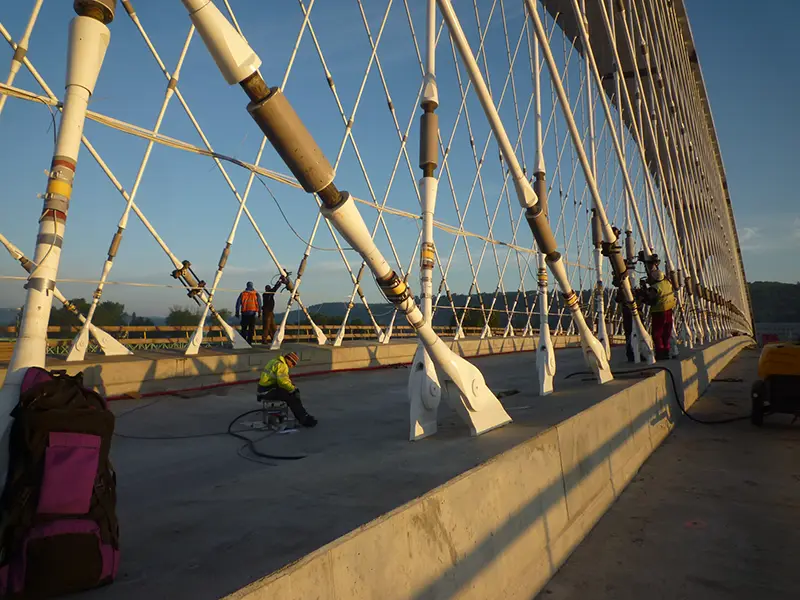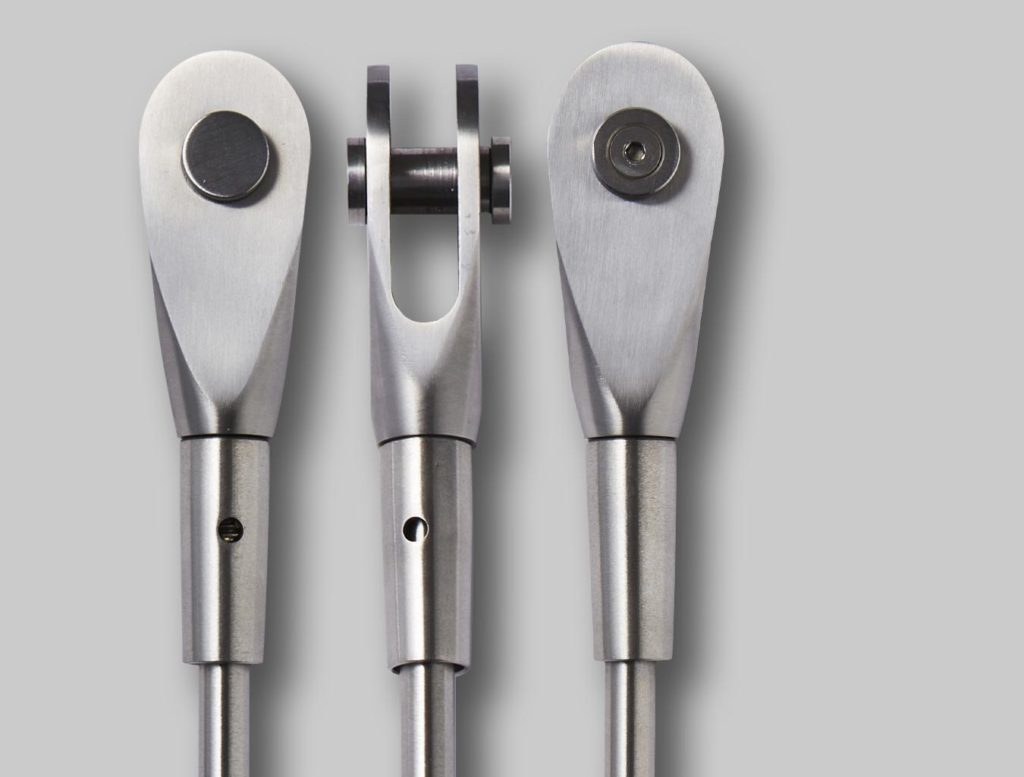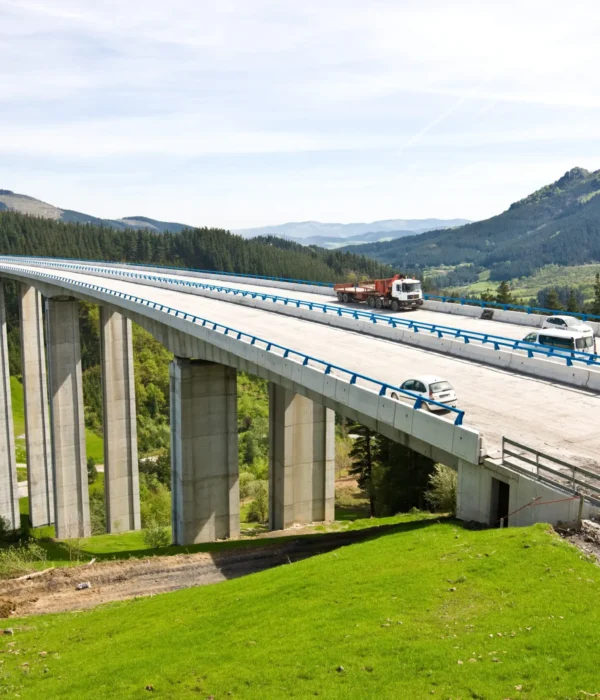Background: This bridge is the latest addition to the ring road in Prague and will carry a two-lane road, two tram lines, walking and cycling paths on the Vltava River. Troja Bridge represents a major step forward in structural efficiency. By reconfiguring the hangers of the bowstring arch from a conventional vertical arrangement to a web like diagonal one, it has dramatically improved the bridges performance providing four times more rigidity. It’s slender arches and low height-to-span ratio create a unique structure.
The Bridge won the European Convention for Constructional Steel (ECCS’s) Bridge Award (2015) for Excellence:
Macalloy involvement:
Macalloy supplied its Tension Rod system to be used as the bridge hangers. Macalloy designed a unique fatigue resistant thread form for the project, which was tested in accordance with EN 1993-1-11 and meets the requirements of Eurocode 3 for fatigue connections in bridges.
The unique criss cross formation of the hangers makes the bridge stiffer and allows for greater length to height ratios to be achieved over standard bowstring arch bridges. The bridge has a span of 200 metres while the arch is only 20 metres high at its highest point compared to a standard bowstring arch which would need to be 50 metres tall. This design helped save up to 40% in material.
The bars were tensioned using Macalloy’s TechnoTensioner, a device for stressing tension rods using a turnbuckle connection. All loads were calculated by Excon using software modelling and the loads were monitored for each stressing cycle using strain gauges and calculated loads for the next load cycle were then modified according to how the arch bridge reacted.


Looking for a particular project? Try our….



